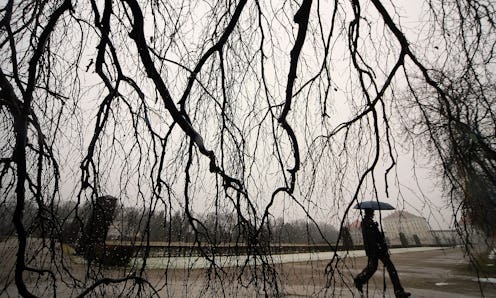News
Is The City Of Calhoun The Anti-Steubenville?

The chilling details of the 2012 Steubenville, Ohio rape case are forever preserved on social media. The self-titled "rape crew" used Twitter, YouTube and Facebook to document, in excruciating detail, the night's timeline. And as details of last month's alleged gang-rape after a high-school prom in Calhoun, Georgia emerge, there are similar themes: a party full of high schoolers, an assault involving high school athletic superstars, bystanders who did nothing. Social media played a role in Calhoun, too — but in a very different capacity.
At a prom night afterparty last month, two football players and a baseball star allegedly assaulted an 18-year old woman, causing tearing and severe trauma. Gilmer County Sheriff Stacy Nicholson called the sustained injuries "substantial." The victim was reportedly attacked in a room with four male party attendees, and the fourth man's role is unclear.
Before the three former Calhoun High School students were arrested and charged with aggravated sexual battery and underage consumption, a #standforHER social media campaign voiced support for the victim on Facebook, Twitter and Instagram. Social media and sexual assault cases have been increasingly intertwined, for better or for worse, since Steubenville. But rather than the top-down national uproar that we've seen with high-profile cases, this particular hashtag activism grew from the locals.
It seems that the most ardent activists would come from the town where the incident occurred — but in the past, this hasn't been in the case. In Steubenville, the two charged rapists were treated as victims themselves in the community. Desperate to protect his players, one of Steubenville's 19 football coaches told the Herald Star that she was covering her own mistakes and shaming his program:
"What else are you going to tell your parents when you come home drunk like that and after a night like that?” said Hubbard, who is one of the team’s 19 coaches. "She had to make up something. Now people are trying to blow up our football program because of it."
Elsewhere, in Maryville, Mo., 14-year old Daisy Coleman was left on her family's lawn, drunk, in freezing temperatures after being allegedly raped. The rape suspect, the grandson of a former state representative, was seemingly protected by the community. Coleman was bullied at Maryville High School, where she was a freshman, and subsequently attempted suicide on three separate occasions. Her family was eventually forced to move.
Maryville, Steubenville, and Calhoun all have populations under 20,000. They are towns that value high school sports. These three places were rocked, not only by the tragic events themselves, but the crush of national attention that came as the cases developed. But the actions of Calhoun residents in the wake of sexual assault allegations paint an entirely different picture than its predecessors. The social media participation was startlingly supportive, and utside of the Internet, students and parents organized protests. Calhoun High School barred the three accused rapists from walking at graduation. And in their absence, uproarious cheers erupted for the woman they violated as she crossed the stage, with blue ribbons showing their support. Local columnist David Cook was quick to dispel a common myth: This isn't about alcohol.
It’s not about how much beer the teenagers drank after the prom. It’s not about how much liquor or wine they had with them at their resort cabin party in the North Georgia woods.
This is about sexual assault.
And aggravated sexual battery.
For Calhoun, the national support is only augmenting the fight rather than fueling it. What is changing? Are the people in Calhoun extraordinarily progressive? Isn't it sad that I have to use words like "progressive" just because half the town didn't jump to blame an assault victim rather than her aggressors? Though the social media activism may not be as prevalent in this instance, the national attention given to similar instances may finally be changing attitudes about how America, as a whole, views sexual assault. We are finally seeing the White House take action on the rape epidemic on college campuses, but as Jessica Valenti pointed out, we should be seeing more progress in sexual violence education before college. And with Calhoun, we may finally be seeing the kind of progress needed to get us there.